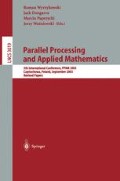Abstract
The problem of crisp and fuzzy interval (number) comparison is of perennial interest, because of its direct relevance in practical modeling and optimization of real-world processes under uncertainty. There are many approaches to this problem presented in literature, but in all cases the authors propose the methods which give the result of interval comparison in form of real or Boolean number. On the other hand, it is easy to see that all arithmetic operations on intervals give us intervals. So, it seems quite natural to expect the result of interval comparison as interval as well. Indeed, when comparing intervals, we factually order the sets, and it should be preferable to get the result as the some type of set (interval). To do this, we propose the approach, which can derive us the results of comparison as the probability interval. For this purpose, we use the Dempster-Shafer theory of evidence with its probabilistic interpretation.
Access this chapter
Tax calculation will be finalised at checkout
Purchases are for personal use only
Preview
Unable to display preview. Download preview PDF.
References
Wadman, D., Schneider, M., Schnaider, E.: On the use of interval mathematics in fuzzy expert system. International Journal of intelligent Systems 9, 241–259 (1994)
Yager, R.R., Detyniecki, M., Bouchon–Meunier, B.: A context-dependent method for ordering fuzzy numbers using probabilities. Information Sciences 138, 237–255 (2001)
Kundu, S.: Min-transitivity of fuzzy leftness relationship and its application to decision making. Fuzzzy Sets and Systems 86, 357–367 (1997)
Krishnapuram, R., Keller, J.M., Ma, Y.: Quantitative analysis of properties and spatial relations of fuzzy image regions. IEEE Trans. Fuzzy Systems 1, 222–233 (1993)
Nakamura, K.: Preference relations on set of fuzzy utilities as a basis for decision making. Fuzzy Sets and Systems 20, 147–162 (1986)
Sengupta, T.K.P.: On comparing interval numbers. European Journal of Operational Research 127, 28–43 (2000)
Kundu, S.: Preferance relation on fuzzy utilities based on fuzzy leftness relation on interval. Fuzzy Sets and Systems 97, 183–191 (1998)
Sevastjanov, P., Venberg, A.: Modeling and simulation of power units work under interval uncertainty. Energy 3, 66–70 (1998) (in Russian)
Sevastjanov, P., Venberg, A.: Optimization of technical and econmic parameters of power units work under fuzzy uncertainty. Energy 1, 73–81 (2000) (in Russian)
Sevastjanov, P.V., Rog, P.: A probabilistic approach to fuzzy and interval ordering. Task Quarterly, Special Issue ”Artificial and Computational Intelligence” 7, 147–156 (2003)
Sevastianov, P., Rog, P., Karczewski, K.: A Probabilistic Method for Ordering Group of Intervals. Computer Science, Czestochowa University of Technology 2, 45–53 (2002)
Sewastianow, P., Rog, P., Venberg, A.: The Constructive Numerical Method of Interval Comperison. In: Wyrzykowski, R., Dongarra, J., Paprzycki, M., Waśniewski, J. (eds.) PPAM 2001. LNCS, vol. 2328, pp. 756–761. Springer, Heidelberg (2002)
Dempster, A.P.: Upper and lower probabilities induced by a muilti-valued mapping. Ann. Math. Stat. 38, 325–339 (1967)
Dempster, A.P.: A generalization of Bayesian inference (with discussion). J. Roy. Stat. Soc., Series B 30, 208–247 (1968)
Shafer, G.: A mathematical theory of evidence. Princeton University Press, Princeton (1976)
Yager, R.R., Kacprzyk, J., Fedrizzi, M.: Advances in Dempster-Shafer Theory of Evidence. Wiley, New York (1994)
Goodman, I.R., Nguyen, H.T.: Uncertainty Models for Knowledge-Based System. North-Holand, Amsterdam (1985)
Vasseur, P., Pegard, C., Mouaddib, E., Delahoche, L.: Perceptual organization approach based on Dempster-Shafer theory. Pattern Recognition 32, 1449–1462 (1999)
Bloch, B.: Some aspects of Dempster-Shafer evidence theory for classification of multi-modality images taking partial volume effect into account. Pattern Recognition Letters 17, 905–919 (1996)
Beynon, M.: DS/AHP method: A mathematical analysis, including an understanding of uncertainty. European Journal of Operational Research 140, 148–164 (2002)
Author information
Authors and Affiliations
Editor information
Editors and Affiliations
Rights and permissions
Copyright information
© 2004 Springer-Verlag Berlin Heidelberg
About this paper
Cite this paper
Sevastjanow, P. (2004). Interval Comparison Based on Dempster-Shafer Theory of Evidence. In: Wyrzykowski, R., Dongarra, J., Paprzycki, M., Waśniewski, J. (eds) Parallel Processing and Applied Mathematics. PPAM 2003. Lecture Notes in Computer Science, vol 3019. Springer, Berlin, Heidelberg. https://doi.org/10.1007/978-3-540-24669-5_87
Download citation
DOI: https://doi.org/10.1007/978-3-540-24669-5_87
Publisher Name: Springer, Berlin, Heidelberg
Print ISBN: 978-3-540-21946-0
Online ISBN: 978-3-540-24669-5
eBook Packages: Springer Book Archive

